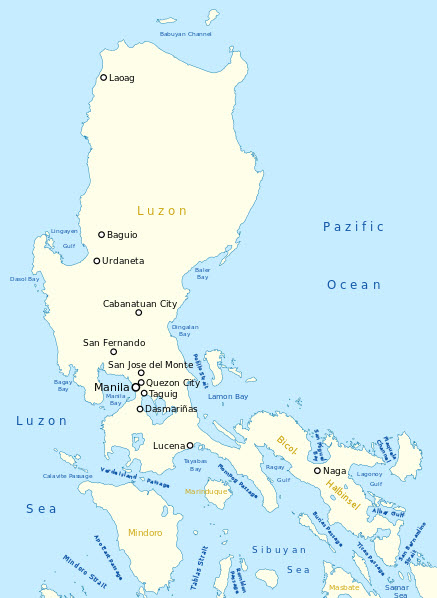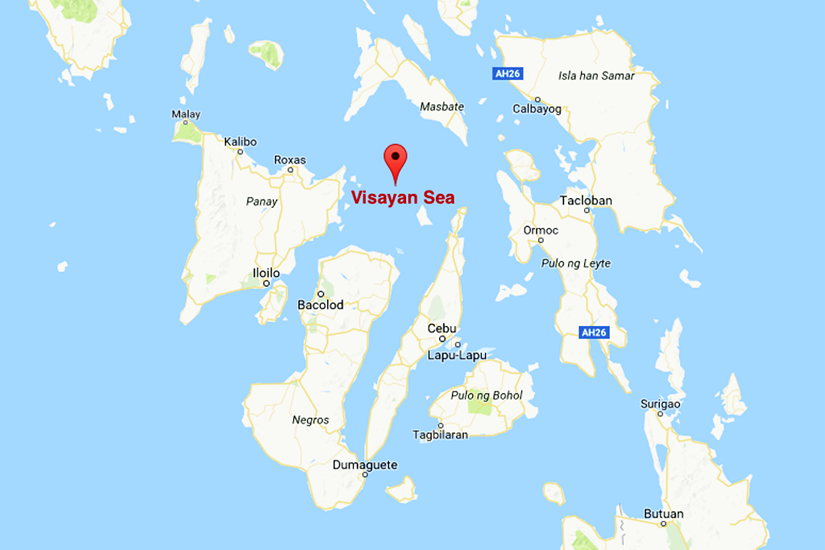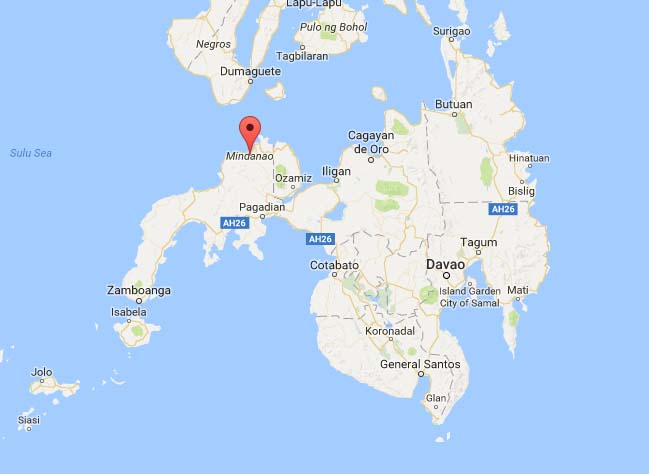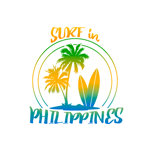Three Regions in the Philippines
Luzon
Located in the northern region, Luzon is the largest and most populated island of the Philippines; it’s the political and economic hub of the country. It’s home to the capital city, Manila as well as Quezon City which is the most populated city in the Philippines. The bustling metropolis of Manila is set on a deep bay that’s famous for its sunsets, as well as its Spanish colonial buildings.
Luzon is an island of contrast, from the Cordillera Mountains and the rice fields of Banaue, to the rugged coastlines with endless world-class surf spots. Mount Mayon Volcano as well as the whale sharks of Donsol in the south are a draw card for travellers from around the globe.
Luzon is referred to as one of the three primary Filipino island groups. It includes the Luzon mainland, the Batanes and Babuyan groups of islands to the north, Polillo Islands to the east, and the outlying islands of Catanduanes, Marinduque, Masbate, Romblon, Mindoro and Palawan, among others located to the south.

Northern Luzon
Aparri, Cagayan
A 13-hour drive from Manila or a three-hour drive from Tuguegarao Airport will get you to Aparri, located on the Northern tip of Luzon. This right- and left-hand beach break is suitable for intermediate to advanced surfers when the swell produces 6ft waves, from August to March. However, it’s suited to beginners the rest of the year from April to July. You won’t find any crowds here, just locals soaking up the surf. Respect them and you’ll enjoy everything this unique surfing destination has to offer.
Pagudpud, Ilocos Norte
One of the least crowded areas in the Philippines, Pagudpud offers a variety of waves for beginners through to advanced surfers. With surf spots like Mauela & Coco’s point, Blue Lagoon or Maira-ira Cove, all levels of surfers can enjoy this idyllic area from June/July through to October. White sand beaches, turquoise waters and tropical jungles make Pagudpud a must visit for every surfer traveling the Philippines.
North Western Luzon
Badoc to Santa Maria
The area of Badoc (including Badoc Island) south towards Santa Maria has countless top-class surf spots. This stretch of 80 kilometres of pristine coastline is every surfers dream. Crystal clear water, perfect surf and tropical surroundings make North Western Luzon a must visit. With spots like Turtle Head on Badoc Island, a short right-hand point break that ranges from 4-10ft and Puro Pinget, a peninsula with a mix of beach and reef breaks with a maximum swell of 6ft, this area is one to add to the itinerary.
La Union
Being in reasonably close proximity to Manila and with a mix of breaks that cater to all levels of surfers, La Union is a popular surf spot for Filipinos and international visitors alike.
With breaks like Mona Lisa Point, a right-hand point break which is perfect for long boards, San Juan Beach, a busy right-hand reef break and Bacnotan, a long left-hand break suitable for beginners, La Union is one to put on the list.
The best time to surf in La Union is between October and March, with waves ranging from 2 – 8ft. With a range of surf schools and surf resorts, as well as local surf guides and board rental, La Union can be crowded in the peak season so make sure you plan ahead.
Baler, Aurora
The birthplace of surfing in the Philippines. Baler is a legendary surfing region with long black sand beaches and world-class surf suitable for beginners to advanced surfers. Sabang Beach is a right- and left-hand beach break that produces numerous glassy peaks, perfect for beginners when the conditions are right.
A 20-minute tricycle drive or 10-minute motor boat ride from Sabang will get you to the best surfing spot in Baler, Cemento. It’s a steep, short and quick righthander over a sharp coral reef suitable for advanced surfers only with swell reaching up to 14ft.
Within walking distance of Baler is Charlie’s Point with peaks breaking lazily over a sand bottom which is perfect for beginners.
The best to time to surf in Baler is between October and February. Numerous surf camps and surf schools, as well as experienced surf guides are available for all levels.
Zambales
A 3 to 4-hour drive from Manila will get you to the province of Zambales. The towns of San Felipe, San Narciso and San Antonio all have surf spots. Including Liwa, a large, soft left-and-right-hand beach break, Crystal Beach, a right- and left-hand beach break suitable for all levels, as well as Magic Left, a left-hander with rolling hills and waterfalls as a back drop.
May to late November is the best time to surf in Zambales with consistent swell coming through and uncrowded breaks, while December to April can produce big swell if the conditions are right.
Bagasbas Beach, Daet
An uncrowded exposed beach break makes Bagabas beach the ideal surf destination. A 2-hour drive from Naga City Airport will get you to this awesome spot which offers swell year-round. The best time for advanced surfers is August until November, with smaller swell suitable for beginners the rest of the year.
Real, Quezon City
Located a few hours from Manila, Real is the perfect spot for beginner surfers. Real offers right- and left-hand beach breaks on Mapalad and Tignoan Beach. The best time to surf in Real is October to February.
For more advanced and adventurous surfers, Polillio and Jomalig Island offer reef breaks in super remote settings with big swell between September to April. Travel by boat to these pristine islands for the ultimate surf experience.
Catanduanes Island
An uncrowded line up, crystal clear water and island vibes make Cantanduanes Island extremely appealing for surfers that are seeking a once in a lifetime experience. With spots like Majestics at Puraran Bay, one of the fastest, most hollow rights on the planet, this reef break is not for the faint hearted. It’s only suited to advanced surfers with the best swell being between July and November; 10ft perfectly barrelling waves aren’t uncommon.
From February to June beginner and intermediate surfers can enjoy smaller swell. The Catanduanes Reef Break, the annual surf and music festival, is held in May for those who like to party like a local.
Fly to Virac Airport and then travel one hour to Puraran by road to get to this exotic surfing destination.
Eastern Luzon
Palawan
You may be surprised that one of the Philippine’s premier tourist destination has surf. Mainly frequented by divers and tourists, Palawan has seasonal surf that will impress.
From uncrowded breaks like Duli Beach and Calaan Beach, suitable for beginner and intermediate surfers, and Mike’s Point, a right- and left-hand reef break that’s suitable for intermediate surfers with a stunning backdrop of Cadlao Island, Palawan is a one to add to the list.
The best time to surf in El Nido, Palawan is October through to February. Bring all your surf gear, including surf accessories just in case. These surf spots are pretty remote and there may be limited, if any, gear available.
Surfboards are available for rental at Nagtabon Beach which is 1 ½ hours from the city of Puerto Princesa.
Southern Luzon
Gubat Bay
Gubat Bay is located in Sorsogon Province in the Bicol Region of the Philippines. The best time to surf the beach breaks of Gubat is between September and April. From Legazpi City Airport it’s a 2-hour drive to Gubat. With a few surf camps to choose from and stunning beaches, this bay is worth a visit.
Check out the surf spots in Luzon here.
Visayas
The Visayas are located in the central region of the three primary Filipino island groups. The major islands of the Visayas are Panay, Negros, Cebu, Bohol, Leyte and Samar, with a few hundred more being part of the island group. Large mountain ranges characterise the Visayas with Mount Canlaon rising to a height of 2,465 metres. The island group also features some of the most pristine beaches on earth, including Palawan and Boracay, which are sought-after tourist destinations for both foreigners and locals alike.
The two major Visayan urban centres are Cebu City on Cebu Island, and Iloilo City on Panay. Cebu City’s Spanish colonial architecture, including the San Pedro Fort and the Basilica del Santo Niño, make it well worth a visit.

Other attractions include Bohol Island’s Chocolate Hills which are a group of 1,000+ conical, grass-covered mounds that turn brown in the dry season. The rare bug-eyed primates called tarsiers, which are protected at the Philippine Tarsier Sanctuary. Kawasan Falls in Badian, Cebu where the water cascades into a beautiful turquoise pool. And Malapascua Island which is one of the world’s best dive sites.
The three major Visayan languages are Cebuano (the mother tongue of around one-fifth of the Philippines’ population), Hiligaynon, and Waray-Waray.
Surf areas in Visayas:
1. Eastern Samar
Borongan City
Borongan City is a thriving city with 50,000 people. Expect busy roads, lots of food stalls and somewhat developed beaches. If you’re searching for unspoiled beaches then you may need to travel further up or down the coast from the city, which can be done via van or bike in the dry season. A range of white to black sand beaches, as well as mostly unexplored surf spots line the coast of Borongan City and the surrounding areas.
Catch a van from Tacloban; it’s a 3-4-hour drive from Tacloban Airport to Borongan City, or fly direct to Borongan Airport via private tour company, PASHADA Travel and Tours; they fly every Friday from Cebu and Clark.
The main surf spot in Borongan City is easy to get to and suited for beginner/intermediate to advanced surfers. For all levels of surfers, hiring a local surf guide is essential to get the most out of your stay here; they’re experienced and know the breaks inside out. The main surf spot can be tricky to navigate with strong currents and large swell, so your guide will be invaluable when it comes to maximising your surf sessions. The professional surf guides also offer surf lessons for less experienced surfers.
Eastern Samar is dominated by two seasons, the SW monsoon season (between July and Sept) which is less rainy with dominant SW offshores and erratic typhoon swells. And the NE monsoon (between November and March) which is the rainy season with its dominant onshores and more consistent swell with occasional clean conditions. The best time to surf is generally between August and October, however swell isn’t consistent during this time. During November, the typhoon season switches to the NE monsoon wind swell season, so conditions can be more consistent.
Bring your own surf wear including surf accessories as there’s not a huge supply here. Bring a spare surfboard, fins & fin keys, wax and leashes. Don’t forget your zinc as the tropical conditions will entice you to jump in the water several times a day!
Locals are friendly and welcoming; visiting Borongan City is worth the journey. You’ll experience everything that the Philippines has to offer in this coastal city.
Calicoan Island, Guiuan
Located off the South Eastern point of Samar, Guiuan is a coastal town abundant with white sand beaches, as well as some awesome surf spots. A 2 to 3-hour drive from Tacloban City will get you to the town, then a further 30-minute drive via trike or van will get you to Calicoan Island.
ABCD is a reef break that’s suitable for all surfers including beginners; although it’s recommended for beginner surfers to hire a local surf guide in order to navigate the break. ABCD Beach Surf Camp provides surfboard rentals and surf lessons from local surf instructors. Due it’s remote location, they have a limited range of surf accessories which surfers can buy, so it’s recommended to bring your own surf wear like spare leashes, fins & fin keys, zinc, board repair kit and surfboards.
The swell ranges from 3-8ft and is super clean when the conditions are right. The best time to surf is between April and November. Summer (April and May) provides the best conditions for beginners, while August to October delivers big swell suited to intermediate and advanced surfers.
2. Negros Island
Negros Island consists of two provinces, Negros Occidental and Negros Oriental. It’s an island of magnificent beauty having some of the last of the primary rainforest cover in the Philippines. It’s home to many critically endangered species including the Philippine Hawk-eagle.
The best time to surf on Negros Island is June/July, with July bringing the best swell.
Juliets is a well-known long stretch of beach break in Bonawon Siaton in the province of Negros Oriental. It also has a right-hand point break with loads of a frame waves along the coastline. The best time of the day to surf is during mid tide. It’ll take around 2 hours and cost you around 100 Pesos (USD 5) from Dumaguete City to get to this awesome surf spot.
Another half hour up the coast will take you to the municipality of Santa Catalina. Here you’ll find Piggy Bank, a left-hand surf spot that’s close to a river mouth so the water may not be crystal clear. But with stunning sunsets and clean waves, it’s well worth a visit. To get to the surf spot you’ll need to walk through a cobblestone street near the golf course. This break only sees swell during the Habagat (wet) season between June and September with an average temperature of 36 °C year-round. The journey from Dumaguete City will set you back 130 Pesos (USD 7).
Further north is the ideal surf spot for beginners who are interested in surf lessons; the boulevard in Bayawan City offers perfect waves for those who are interested in learning how to surf. Local surf instructors offer surf lessons at competitive prices and can be found on the beach. This region has loads of unexplored breaks for the more adventurous surfer.
The south western coast of Negros Island, from Siaton to Sipalay, is a long stretch of coastline that’s great to explore; you’ll find gems along the way. This stretch of coastline faces the Sulu Sea which is home to a World Heritage Site, Tubbataha Reef National Marine Park.
The main spot in Sipalay is the public beach which offers small to medium sized waves suitable for beginner and intermediate surfers.
Check out the surf spots in Visayas here.
Mindanao
Located in the southern region of the archipelago, Mindanao (still commonly known as Southern Philippines), is the second largest island in the Philippines. Mindanao and the smaller islands surrounding it make up one of the three main island groups of the same name.
Mindanao is the eighth most populous island in the world; it’s larger than 125 countries worldwide, including the Netherlands, South Korea, Austria, and Ireland. From high, rugged, faulted mountains and isolated volcanic peaks to high rolling plateaus and swampy plains, Mindanao’s geography is hugely varied. The island is home to Mount Apo, the highest mountain in the country.
Dozens of languages are spoken throughout Mindanao; among them Cebuano, Hiligaynon, Surigaonon, Tausug, Maranao, Maguindanao and Chavacano are most widely spoken.

Mindanao is considered to be the breadbasket of the Philippines, with eight of the top 10 agri-commodities exported from the Philippines coming from Mindanao.
Precautions should be taken when traveling around the Southern part of Mindanao, especially when traveling to the Autonomous Region in Muslim Mindanao and the Zamboanga Peninsula. However, travelling to places like Siargao, the prime surf spot in the Philippines, and Lanuza poses minimal risk. It’s recommended to check the official government travel warnings of your country before traveling to Mindanao.
Surf areas in Mindanao:
1. Northern Mindanao
Siargao Island
Siargao is a magical destination that every surfer needs to experience at least once in their life. Uninhabited islands, crystal clear water and top-class surf breaks make Siargao a destination to tick off the bucket list. The infamous Cloud 9 surf spot was discovered by travelling surfers in the late 1980s, and it’s now a world-renowned surf spot that hosts WSL qualifying events.
Cloud 9 surf spot is a right-hand reef break with a short, barrelling peak that’s known for its thick, hollow tubes. A north-east swell direction is ideal; too much east bypasses Cloud 9, while too much north shuts it down. A west wind holds up the rights nicely with short hollow lefts; the best tide is mid to high tide. Cloud 9 sucks in the swell and can handle large faces before it maxes out, so only experienced surfers are recommended to take it on.
While it’s not the only wave in the Tuason Point and General Luna areas, it’s the most popular. It’s easily accessible from the long pier which leads to overcrowding, giving it the nickname of “Crowd 9” among local surfers. If it’s too packed, you can try the nearby surf spots, Jacking Horse or Quicksilver, take a drive up north to Pacifico, or jump into a boat for some outer reef sessions.
The best time to surf in Siargao is during the Southwest “Habagat” Monsoon, from August to November, which generates offshore winds. The swell peaks in September and October, while smaller swell hits the shores at each end of the season.
Siargao is undoutedly the surfing mecca of the Phillipines; surf culture runs deep with strong support from local government. The island’s talented surfers include sisters, Nilbie and Nildie Blancada, as well as John Mark Tokong and brothers, PJ and Philmar Alipayo. Siargao’s chilled vibe, cool bars and cafes, stunning beaches and friendly locals ensure visitors keep coming back. There are loads of local surf shops offering surf wear, surf accessories and surf apparel, as well as a local shaper, Cocosurf and local surf brand, Marajaw Surf.
If you’re a beginner then you’ll have heaps of options for surf lessons and board rental in General Luna. Local surf instructors are experienced and certified so you know that you’re in good hands.
Accessible from both Cebu and Manila via air, if you’re a surfing enthusiast you’ll regret not adding Siargao to your itinerary.
Lanuza
Lanuza is a hidden gem on the north-eastern coast of Mindanao in Surigao del Sur, not to be confused with Siargao! It’s a laid-back coastal town with consistent swell hitting intermediate/advanced beach and reef breaks. The locals like to call the main surf spot a beginner break, but beware of the super heavy swell if you’re a less experienced surfer.
The best time to surf is November to March when the really big swell reaches Lanuza’s shores. The area is prone to rainfall with heavy rain November to February, and April to August experiencing the lowest rainfall.
Local surfers offer surf lessons or guiding if you’re looking to improve your moves; they’re friendly and their surf skills might put you to shame. Explore the town’s northern and southern coastline to find secret spots with world-class breaks. Punta Left is an advanced reef break that produces swell up to 10ft during the season.
To get to Lanuza from Tandag Airport it’ll take you around an hour. At the Balilahan Terminal in Tandag, jump into any jeep or bus bound for Surigao or Cantilan, and get off at the market in the centre of town. A bus from Surigao City will take around 5-6 hours depending on traffic.
It’s recommended to take all the surf gear you’ll need, including surf accessories and surfboards. You’ll find second hand surfboards and limited accessories on sale from local surfers, but you won’t find surf shops in the town centre so make sure you’re prepared.
For the more adventurous surfers, Ayuki Island is a surf experience off the beaten track. It’s a tiny island of around 500 people located not far from Lanuza that’s only accesible by small fishing boat. You won’t find any hotels or Airbnb’s on the island, only homestays are available for those wanting to stay overnight. Ayuki’s reef breaks are super advanced having broken many a surfboard in their time. With friendly locals, a pristine environment and world-class surf, it’s well worth the trip.
Tandag
About an hour south of Lanuza is Tandag City; a small city of around 50,000 people. There are caves, waterfalls and springs in close proximity to the city.
Marami is a peeky beach break just north of the city that’s suitable for beginners; swell is between 1-4 ft.
Tandag experiences rainfall throughout the year, with a short dry season. Wet season is from September to February and the dry months are from March to August.
2. South Eastern Mindanao
Dahican Beach
Dahican Beach is located on the south eastern coast of Mindanao in the city of Mati. It has a 2-kilometer stretch of shoreline with pure, fine white sand.
This right-hand reef break is suitable for beginner and intermediate surfers; surf instructors offering surf lessons for beginners are available. The local surf camp is centrally located for those looking for accommodation. The best time to surf in Dahican is September through to March, with February producing the glassiest waves and December to March producing the biggest swell. This surf spot is ideal for long boarders when the swell is smaller.
To get to Dahican Beach, you can take a yellow bus to Mati Bus Terminal then hop on a habal-habal (motorcycle) to Dahican for around 200 pesos (USD 11), or rent a van to take you directly for around 3500 pesos (USD 180) both ways.
If you’re looking for something other than surfing to do, you can visit one of the three protected areas in the region, the Mount Hamiguitan Range Wildlife Sanctuary, Mati Protected Landscape, and Pujada Bay Protected Landscape and Seascape.
Check out the surf spots in Mindanao here.
